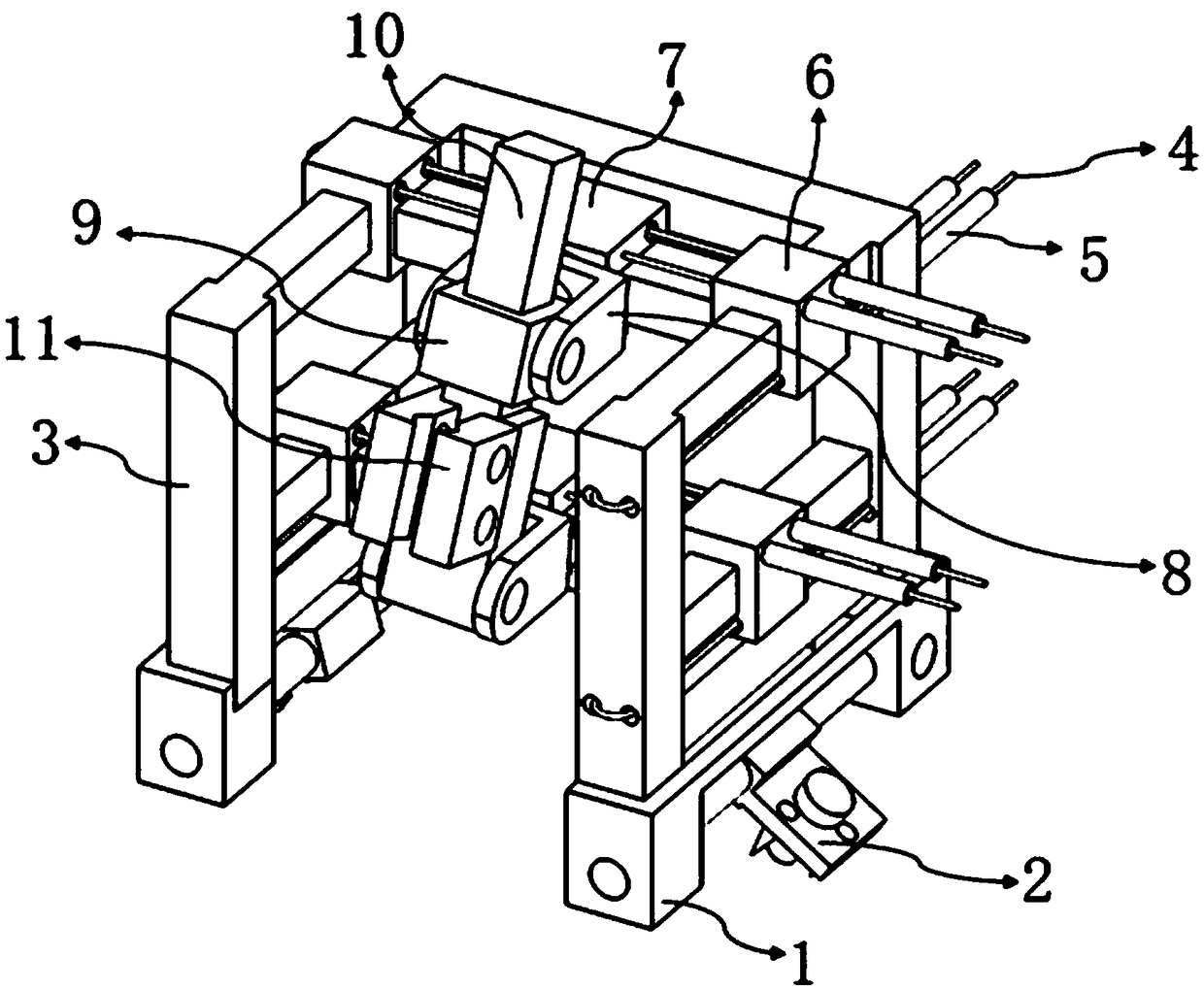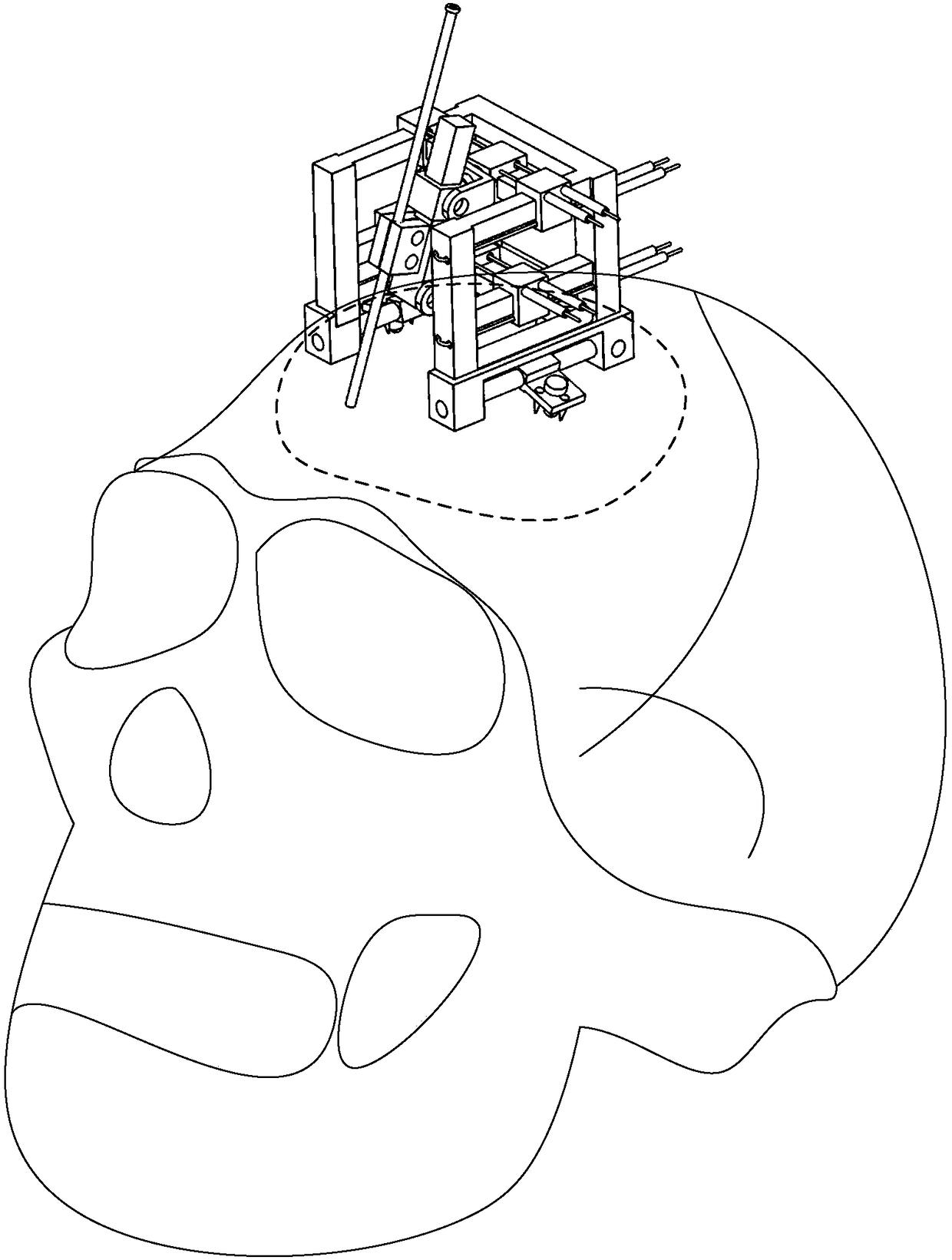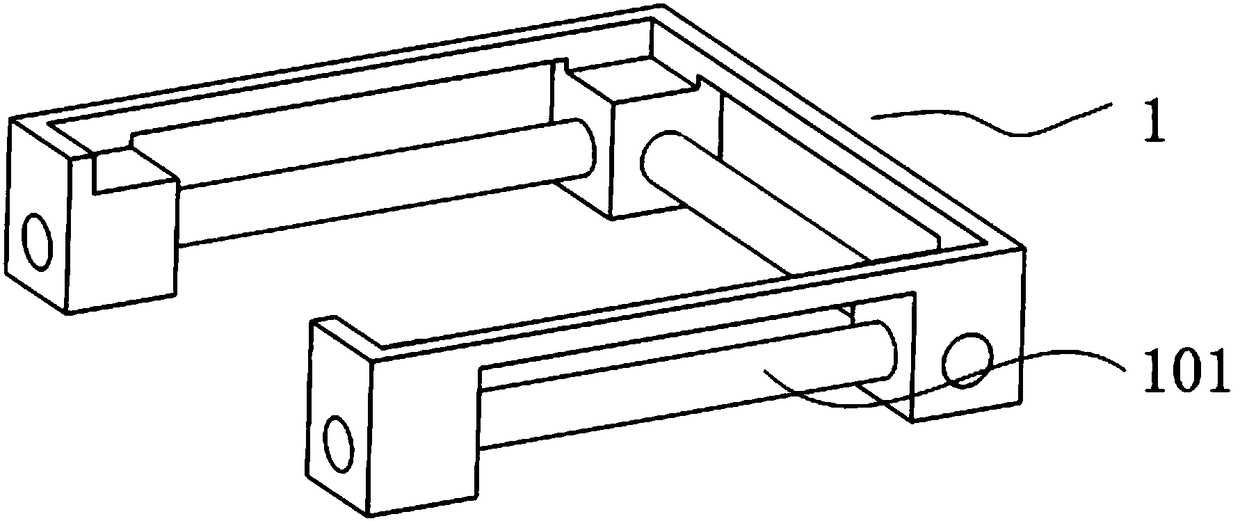Parallel brain surgery minimally-invasive-surgery robot capable of being fixed to skull
A minimally invasive surgery, robotic technology, applied in surgical robotics, surgery, medical science and other directions, can solve the problems of patient discomfort, cumbersome operation, poor flexibility, etc., to achieve the effect of reducing volume and weight, reducing fear, and high positioning accuracy
- Summary
- Abstract
- Description
- Claims
- Application Information
AI Technical Summary
Problems solved by technology
Method used
Image
Examples
Embodiment Construction
[0042] In order to make the above objects, features and advantages of the present invention more comprehensible, specific implementations of the present invention will be described in detail below in conjunction with the accompanying drawings. In the following description, numerous specific details are set forth in order to provide a thorough understanding of the present invention. However, the present invention can be implemented in many other ways different from those described here, and those skilled in the art can make similar improvements without departing from the connotation of the present invention, so the present invention is not limited by the specific implementations disclosed below.
[0043] figure 1 It is a schematic diagram of the overall structure of a robot according to an embodiment of the present invention. Such as figure 1 As shown, the robot according to the present invention includes a base 1 , a frame 3 , a driving member 4 , a sliding connection 6 incl...
PUM
 Login to View More
Login to View More Abstract
Description
Claims
Application Information
 Login to View More
Login to View More - R&D
- Intellectual Property
- Life Sciences
- Materials
- Tech Scout
- Unparalleled Data Quality
- Higher Quality Content
- 60% Fewer Hallucinations
Browse by: Latest US Patents, China's latest patents, Technical Efficacy Thesaurus, Application Domain, Technology Topic, Popular Technical Reports.
© 2025 PatSnap. All rights reserved.Legal|Privacy policy|Modern Slavery Act Transparency Statement|Sitemap|About US| Contact US: help@patsnap.com



